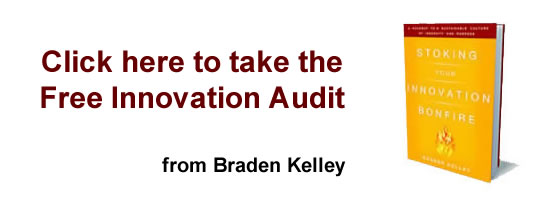Why your customer-centricity project failed to deliver innovative outcomes
![]()
Customer-centricity is an ongoing theme that is central to businesses that are globally leading and relevant. Today, organisations know that consumer needs will effect and drive business strategy. It’s no longer enough to have a great product, you have to understand how that product fits into the lives of your customer.
Organisations are investing heavily to innovate their customer experience. They want their customers to have a seamless, integrated, friction-free journey with them. They want their customers to feel important, to be engaged and to feel emotionally connected to their brand. They want to innovate to meet their customer’s needs.
And yet, many customer experience programs are not delivering innovative ideas.
Senior leaders are now lamenting that for the amount of time, money and effort spent on engaging with customers; the insights are neither new or novel. Customer-centricity is becoming a catch-all phrase for delivering continuous improvement tweaks rather than innovation.
So what’s going on here? Doesn’t design research and literature always tell us to start with empathy for our customers and that this will lead to breakthrough insights? Let’s unpack some common mistakes in customer-research that could set your project up to fail.
Your project only used surveys to “talk†to customers
If you’re at this point, I suggest you watch this video on the process of Design Thinking before reading any further.
Your customer discovery focused on themes you already knew a lot about
Your organisation may have done significant research on trends in your industry already. For example, if you are a grocery retailer, you know from market research and reports that people want fast convenient service that will be available through both physical and online channels. You are aware that home delivery services and nutrition and wellness are a growing trend and that people want things quickly, cheaply and with little friction. Similarly, If you ask customers what’s important to them about grocery services, it wouldn’t be a surprise if they mentioned most of the aforementioned themes. But, this isn’t supporting your organisation to deliver breakthrough innovation. This is helping you validate trends and themes you already had data about and provide tailored insights for your customer set.
The opportunity to innovate for the customer is to uncover insights in growth areas for your business. For example, rather than focusing on efficiency, convenience or cost; how could grocery stores explore topics and themes such as body image or mental health.
If your goal is to validate what you know or continuously improve areas you’re already working, customer research is a great validation and improvement approach. However, if the purpose is to uncover something new and novel, you want to expand your horizons, think divergently and explore themes that are important to your customer, not just your organisation.
Your customer discovery asked for opinions rather than experience
When going out and speaking with customers, we often want to ask “what do you want†or “how could we serve you betterâ€. In this case, interviewees struggle to answer. Try this example out with your colleague. Ask them: “what do you want for your birthday?â€.
You will be surprised how hard it is for people to articulate an answer to a very simple question. Many people will actually make something up on the spot, just to answer the question.
To capture real insights, ask customers about something they have experienced in the past. For example, if you’re a service organisation who wants to improve their customer service: focus on experience not opinion. Rather than asking “what does 10/10 service mean to you?†ask your customers “Tell me about a time that you received 10/10 serviceâ€
Now this is the tricky part. People feel if they’re not asking directly about their own product or service – then what’s the point? Well – it’s not actually about your product or service. It’s about the customer and what’s important to them. By understanding the key insights of what good service meant to them and what was memorable about that service experience, you will learn about their expectations beyond the bounds of your own organisation.
You did a lot of talking, but little observation
Interviews only capture what people say – not what people do. Many organisations fail to watch and analyse customer behaviour. Observation will reveal a lot about what people struggle with, things they may not even consciously realise are pain points. Trying to understand what people do not just what they say, will actually provide you with stronger evidence than interviews can solicit.
Observing commuter behaviour at Circular Quay as part of our Design Thinking Workshops
One example from my own experience conducting customer research on sustainability and environmental services is when we interviewed large organisations they would claim that they are environmentally conscious and live and breathe sustainably as part of their culture. But, when reviewing procurement policies or analyzing industry data about waste management practices, this was not the case.
What people say and what people do don’t always match up and this tension is where we find opportunity to innovate.
Without bringing observational and indirect customer data into your analysis, you might be missing out on opportunities to uncover behaviour-based insights.
You completed an unnecessary amount of research
A common mistake is that organisations will conduct over 100 interviews when 15 would suffice. In customer research it’s about reaching a saturation point – this is when you are hearing the same information, themes and insights over and over.
Companies get “caught up†in sample sizes that is common in traditional research. With human-centred design you are not necessarily trying to capture a statistically valid sample for an academic paper. Your goal is to uncover trends and patterns from the customer’s perspective. Nonetheless, companies will persist until they complete 90-100 interviews without changing the themes or intent of what they are exploring. This means, you are spending a lot of time, money and effort on learning the same thing over and over for the sake of meeting an erroneous target that “sounded validâ€
You struggled to uncover real insights
Once all the research is said and done, the complex part of customer-centricity projects begin. This is where complex and creative thinking is required because customer research is full of contradictions. People don’t necessarily say what they do and people don’t do what they say. Humans are complex and as such – so is the analysis of customer data.
The goal of distilling customer insights isn’t to identify the “quick wins†or the obvious pain points. But this is where many teams get caught up – trying to show value and fix immediate needs. This is the obvious.
Identifying the areas for breakthrough innovation doesn’t live in the obvious. It’s found buried in the tensions and contradictions in the data. This analysis is much harder to complete and can be very mentally draining. If you only give yourself a one day workshop to get through the analysis, it’s not surprising if your end result is continuous improvement.
Unpacking customer insights is hard work and requires time and complex thinking.
If you’re still reading and want to learn more about the tools and frameworks we use at The Strategy Group to ensure our customer centricity projects deliver real innovation and insights contact me by email michelle@thestrategygroup.com.au or give me a buzz on 0432746776
Wait! Before you go…
Choose how you want the latest innovation content delivered to you:
- Daily — RSS Feed — Email — Twitter — Facebook — Linkedin Today
- Weekly — Email Newsletter — Free Magazine — Linkedin Group
 Michelle Tabart is an Innovation Consultant at The Strategy Group specialising in Design Strategy, Idea Strategy and Venture Strategy to help organisations increase their innovation capability, culture and performance and find new ways to explore opportunities, tackle challenges and create value for their customers. Follow Michelle on twitter @mishtabart
Michelle Tabart is an Innovation Consultant at The Strategy Group specialising in Design Strategy, Idea Strategy and Venture Strategy to help organisations increase their innovation capability, culture and performance and find new ways to explore opportunities, tackle challenges and create value for their customers. Follow Michelle on twitter @mishtabart
NEVER MISS ANOTHER NEWSLETTER!
LATEST BLOGS
Three things you didn’t know about credit cards
Photo by Ales Nesetril on Unsplash Many of us use credit cards regularly. From using them for everyday purchases to…
Read MoreFive CV skills of a business-minded individual
Photo by Scott Graham on Unsplash The skills listed on a CV help employers quickly understand your suitability for a…
Read More


